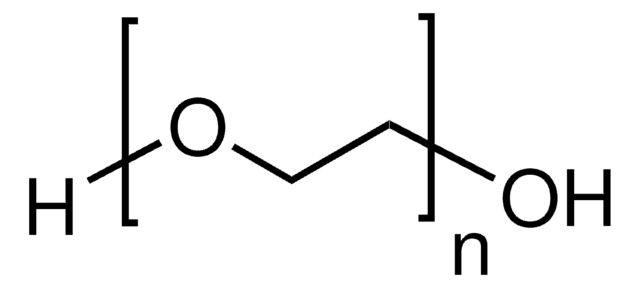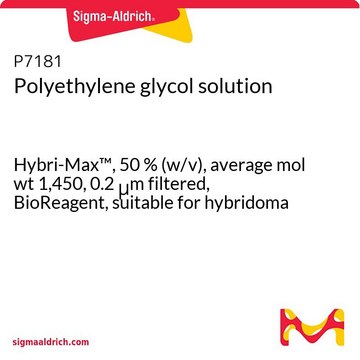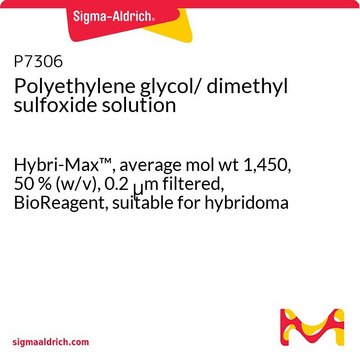P2906
Poly(ethylene glycol)
Hybri-Max™, mol wt 3,000-3,700, waxy solid, BioReagent, suitable for hybridoma
Synonym(s):
Polyethylene glycol, PEG
About This Item
Recommended Products
biological source
synthetic (organic)
Quality Level
grade
Hybri-Max™
sterility
autoclaved
product line
BioReagent
form
waxy solid
mol wt
3,000-3,700
technique(s)
cell culture | hybridoma: suitable
impurities
endotoxin, tested
SMILES string
C(CO)O
InChI
1S/C2H6O2/c3-1-2-4/h3-4H,1-2H2
InChI key
LYCAIKOWRPUZTN-UHFFFAOYSA-N
Looking for similar products? Visit Product Comparison Guide
General description
Application
Recommended for cell fusion.
Legal Information
Storage Class Code
11 - Combustible Solids
WGK
WGK 1
Flash Point(F)
281.5 °F - closed cup
Flash Point(C)
138.6 °C - closed cup
Personal Protective Equipment
Choose from one of the most recent versions:
Certificates of Analysis (COA)
Don't see the Right Version?
If you require a particular version, you can look up a specific certificate by the Lot or Batch number.
Already Own This Product?
Find documentation for the products that you have recently purchased in the Document Library.
Our team of scientists has experience in all areas of research including Life Science, Material Science, Chemical Synthesis, Chromatography, Analytical and many others.
Contact Technical Service

